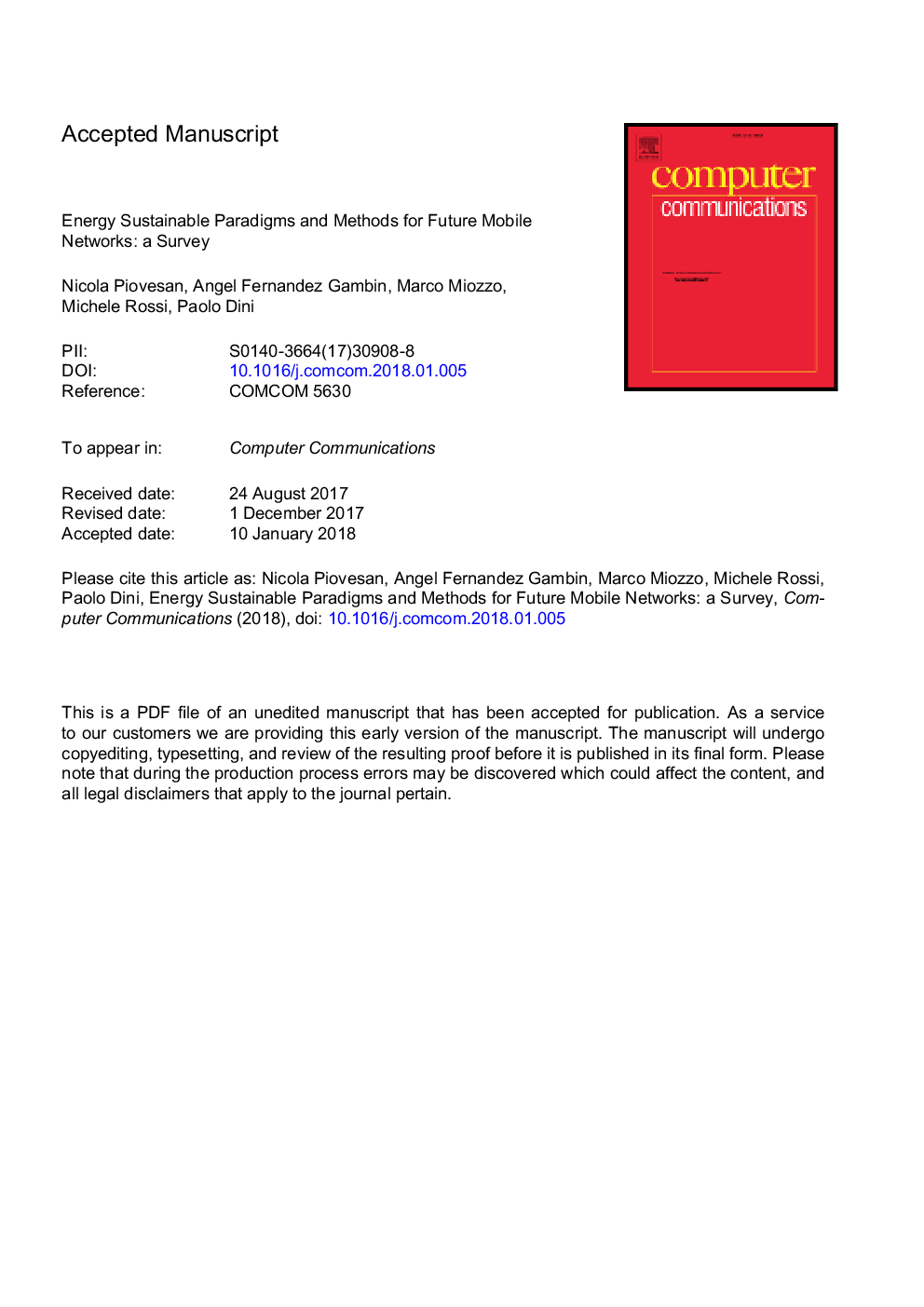| Article ID | Journal | Published Year | Pages | File Type |
|---|---|---|---|---|
| 6880058 | Computer Communications | 2018 | 22 Pages |
Abstract
In this survey, we discuss the role of energy in the design of future mobile networks and, in particular, we advocate and elaborate on the use of energy harvesting (EH) hardware as a means to decrease the environmental footprint of 5G technology. To take full advantage of the harvested (renewable) energy, while still meeting the quality of service required by dense 5G deployments, suitable management techniques are here reviewed, highlighting the open issues that are still to be solved to provide eco-friendly and cost-effective mobile architectures. Several solutions have recently been proposed to tackle capacity, coverage and efficiency problems, including: C-RAN, Software Defined Networking (SDN) and fog computing, among others. However, these are not explicitly tailored to increase the energy efficiency of networks featuring renewable energy sources, and have the following limitations: (i) their energy savings are in many cases still insufficient and (ii) they do not consider network elements possessing energy harvesting capabilities. In this paper, we systematically review existing energy sustainable paradigms and methods to address points (i) and (ii), discussing how these can be exploited to obtain highly efficient, energy self-sufficient and high capacity networks. Several open issues have emerged from our review, ranging from the need for accurate energy, transmission and consumption models, to the lack of accurate data traffic profiles, to the use of power transfer, energy cooperation and energy trading techniques. These challenges are here discussed along with some research directions to follow for achieving sustainable 5G systems.
Keywords
Related Topics
Physical Sciences and Engineering
Computer Science
Computer Networks and Communications
Authors
Nicola Piovesan, Angel Fernandez Gambin, Marco Miozzo, Michele Rossi, Paolo Dini,
